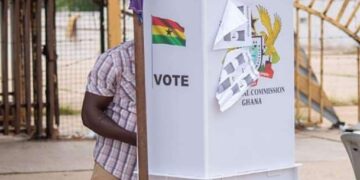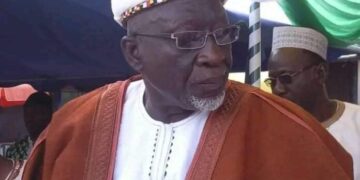
The Bank of Ghana (BoG) has confirmed receipt of US$1.05 billion of this season’s cocoa loan, which it says is instrumental in stabilising the cedi against its seasonal depreciation pressures.
The inflows have also boosted the country’s gross reserves, bolstering them to US$6.9 billion, equivalent to 3.9 months of import cover in October, the Central Bank Governor, Dr Ernest Addison, told journalists on November 27, 2017.
He was responding to questions on the status of the loan disbursement which began right after the Ghana Cocoa Board (COCOBOD) signed a loan agreement in September with 25 banks to borrow US$1.3 billion.
“It has helped in boosting the reserves of the BoG and accounts for the reason why we are able to meet 4.1 months of import cover (the bank’s data released ahead of the press conference quoted 3.9 months of import cover for September and October),” he said.
In addition to the US$1.05 billion received, which is more than 80 per cent of the total loan, Dr Addison said the BoG was expecting to receive the last tranche of US$250 million by the end of this year.
“This should further stabilise the cedi against its major trading partners and cause it to end the year on a positive note,” the governor added.
In December last year, the cedi gained 8.3 per cent to the British pound but lost 6.4 per cent and 9.7 per cent to the euro and the dollar respectively.
Yuletide fever
Proceeds of the annual commodity-backed facility are to be used to finance cocoa production, including purchases of raw beans from farmers by licensed buying companies (LBCs).
In the meantime, however, their disbursement through the BoG enables the bank to retain the dollars and give the cedi equivalent to the COCOBOD.
This annual occurrence, dating back to 1993, has become a major bolster to the cedi, especially towards the last quarter when profit repatriations and increased demand for foreign currencies to meet yuletide imports exert excessive pressure on the local currency.
Mr Emmanuel Asiedu-Mante, who retired as Deputy Governor of the BoG in 2006, said in a separate interview that the cocoa loan had become a major source of reprieve to the cedi.
“As soon as the loan is syndicated, the money is credited to the BoG’s foreign account and immediately, our reserves go up by the amount received. Through that, the cedi is strengthened because there is now enough forex to cushion whatever pressure it might have been facing,” he told the paper on November 30, 2017.
“The money is always credited to the external account and then the cedi equivalent, which is always available anyway, is given based on the purchasing programme,” he said.
edi depreciation
After opening the first quarter of this year on a brighter note, the cedi has registered mixed results against the three major currencies between March and November 10, 2017.
Against the dollar, it lost 3.7 per cent in March but gained 0.3 per cent in April, only to resume a nosedive in the preceding months. As of November 10, its year-to-date depreciation had reached 4.6 per cent, according to data compiled by IGS Financial Services.
The cedi, however, posted losses against the euro and the pound, with year-to-date depreciation as of November 10 reaching 15.4 and 11.7 per cent, respectively.
Source : graphic.com.gh

































